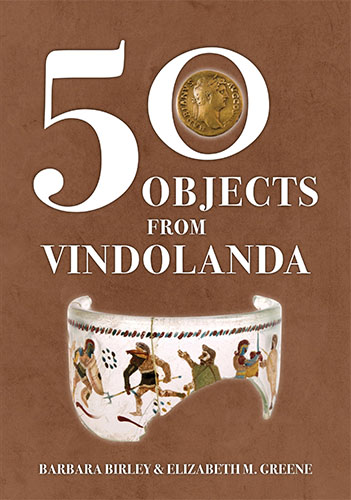
The 96-page book 50 Objects from Vindolanda, published in 2024 by Barbara Birley and Elizabeth Greene, explores 50 different artefacts discovered at the Roman site of Vindolanda to illustrate daily life in a Roman military fort. It is an enjoyable and accessible read that can easily be completed in one sitting or dipped into during coffee breaks.
The book is organized into eight chapters, each focusing on a specific theme. It covers a broad range of topics, including the everyday lives of soldiers, women and children at Vindolanda, as well as religion, clothing, and animals. Each chapter begins with a brief introduction to the topic, followed by the featured artefacts, each presented over one or two pages.
Every object is introduced with a short information box summarizing key details, followed by a more in-depth description accompanied by illustrative images. These visuals—comprising photographs, drawings, and reconstructions—enhance the reader’s understanding. At the end of the book, a bibliography provides further reading for each chapter, offering valuable references for those seeking more in-depth information.
This book serves as an excellent introduction to Roman military life in Britain and is likely to spark further interest in the subject. Vindolanda is a particularly remarkable site due to its well-preserved archaeological material, which provides unique insights into daily life on the Roman frontier. The book will appeal to archaeologists, historians, and anyone with a general interest in Vindolanda or Roman Britain.
Barbara Birley is a professional archaeologist and curator at the Vindolanda Museum, specializing in Roman artefacts found at the site. Elizabeth Greene is a member of the Canada Research Chair in Roman Archaeology. Her research focuses on leather objects, and she is involved in the Vindolanda Archaeological Leather Project (VALP).
While their book provides a comprehensive overview, readers seeking more detailed academic analysis may wish to consult additional scholarly sources. The bibliography included at the end offers useful recommendations for further study.
